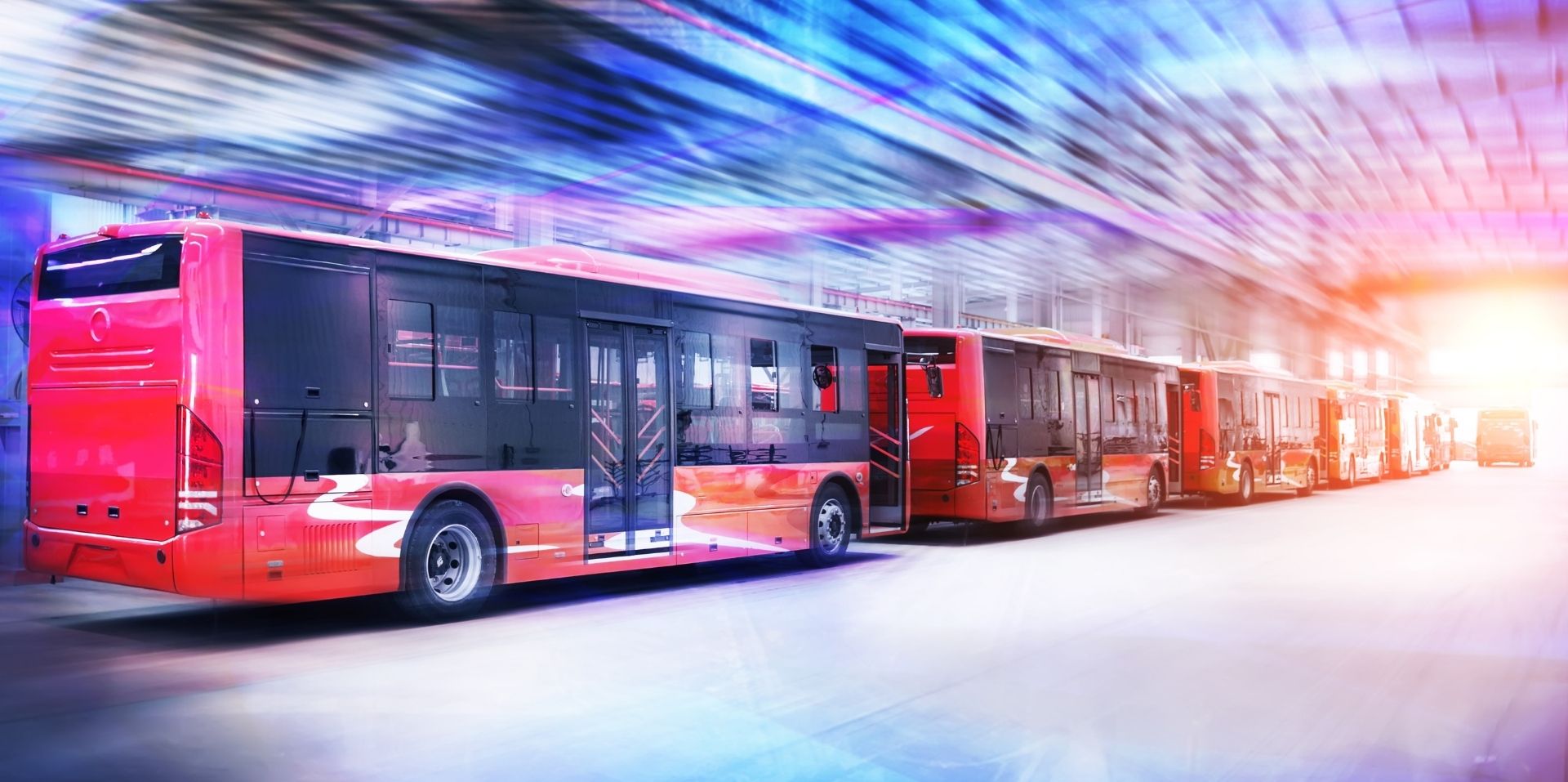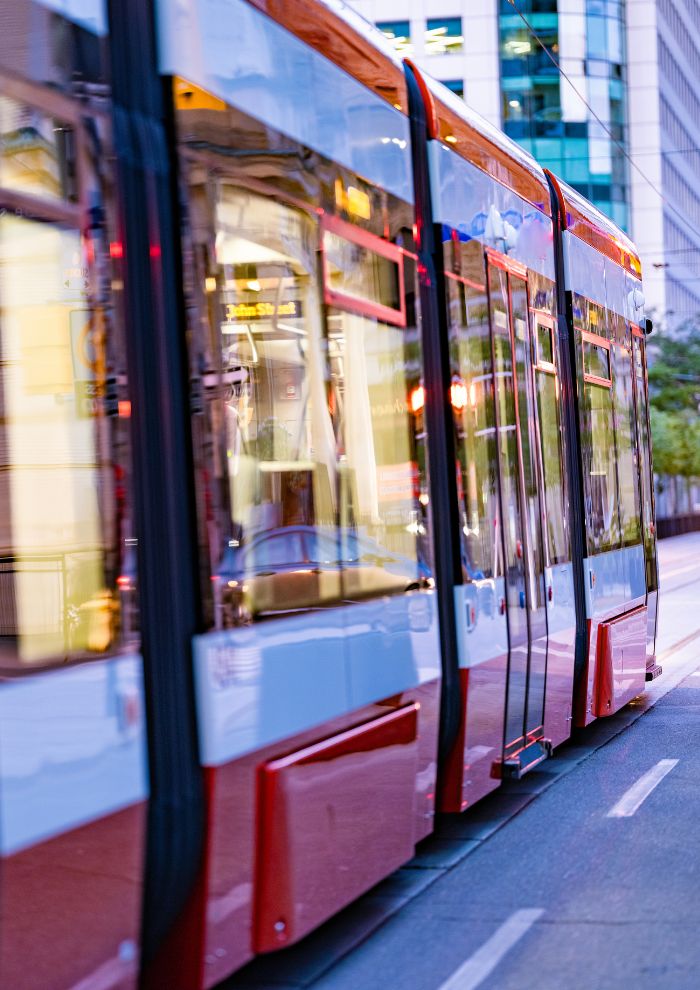Maximizing Safety and Efficiency: A Guide to Camera Systems for Transit Buses and School Buses
One of the most important aspects of public transportation is ensuring the safety of passengers, drivers, and everyone sharing the road.
From school and transit buses to rapid transit systems, camera and video systems are essential to maximizing the safety for everyone involved.
Camera systems do more than just record events as they happen. They make a significant impact on safety and operational efficiency. Here are some reasons why they are so important:
Deterrent: When transportation vehicles are equipped with cameras, it reduces the potential for crime such as theft or vandalism
Dispute resolution: Passengers or staff members may occasionally become involved in acrimonious disputes or altercations. Videos can provide an objective account of events, assisting in the resolution of disputes and identifying those at fault.
Accident investigation: In the event of collisions or accidents, camera footage can be used as crucial evidence to determine what happened and who was at fault. This aids in making insurance claims, pursuing legal action, and creating safety protocols to stop accidents from happening again.
Monitoring drivers: Camera systems assist in keeping monitoring drivers to make sure they follow safety procedures, traffic laws, and company policies. Having safer drivers makes traveling for passengers and other road users safer.
Increasing public trust: The presence of camera systems in public transportation vehicles gives passengers a sense of security. This encourages more people to use public transportation and increases confidence in the transportation system.
There are endless varieties of vehicles, layouts and camera systems. This article will give an overview to understanding the essential points of coverage for a camera and video setup for transit buses and school buses.
Transit Buses
Interior cameras
In order to provide enough coverage so that every moment can get recorded, a transit bus typically needs a combination of 4 to 6 internal cameras.
The driver’s seat, passenger seats and entry and exit doors all need to be properly covered.
These internal cameras are primarily there to protect the driver and passengers. They can help prevent potential crimes, resolving conflicts, and provide evidence in the event of an accident or incident
They can also be used in assessing driver performance and can help ensure drivers are following standard policies and practices.
Front-facing camera:
Front-facing cameras are placed near the front of the bus to record any incidents that might happen close to the driver’s area and to monitor passengers boarding and exiting.
Covering this area helps to protect the driver, ensure passengers are entering and exiting safely, reduce fare evasion and monitor bus capacity.
Rear-facing camera:
Located toward the back of the bus, a rear-facing camera aids in keeping an eye on the conduct of passengers in the back of the vehicle.
Aisle cameras:
One to two aisle cameras can be positioned along the length of the bus to cover the center area where passengers sit. More aisle cameras may be necessary depending on the size of the vehicle.
These cameras are essential for documenting any passenger-related incidents.
Rear door camera:
A camera needs to be placed close to the rear door to monitor passengers getting on and off the bus.
Just like the front-facing camera, the rear door camera helps ensure passenger safety as they exit and records any incidents that might take place.
Dash camera:
Having a dash camera is essential for a transit bus camera system.
This camera captures the area in front of the bus and can provide crucial information in the event that the bus is involved in an accident or traffic infraction.
By providing clear video evidence, dash cameras can help protect from false liability claims.
External cameras
360-degree cameras:
Transit buses are increasingly using 360-degree external camera systems.
These cameras give a full view of the area around the bus, removing blind spots and enhancing safety.
They are typically mounted on the sides, front, and back of the bus and they help the driver with parking, lane changes, and seeing all angles around the bus during stops. They not only make driving safer, they help protect the vehicle from damage.
Bus lane enforcement:
Bus lane enforcement cameras help to improve the efficiency of public transportation and ease traffic congestion.
Buses can maintain or improve route times if drivers are discouraged from illegally using bus lanes, and it can also contribute to increased road safety by reducing the risk of accidents.
Gatekeeper’s Automated Lane Enforcement system automatically records transit lane violations and makes evidence easy to extract for citation creation.
School Buses
Interior cameras
For school buses, it is essential to create the safest environment possible for students.
A camera system not only deters inappropriate behavior but also helps monitor and manage any incidents that happen.
Depending on size and capacity, a school bus typically has 3 to 5 interior cameras.
As with transit buses, the critical interior areas to cover are the driver’s seat, student seating, aisles, and entry and exit doors. However, school buses have unique challenges that set them apart.
Front-facing camera:
Located close to the front of the bus, this camera focuses on recording activities near the driver’s workspace and keeping an eye on students as they board and disembark.
By capturing these instances, the camera makes sure that students are adhering to safety rules like using handrails and waiting until the bus has stopped completely.
Driver-facing camera:
Installed above or close to the driver’s seat, the driver-facing camera provides a clear view of the driver’s actions.
This video can be useful for assessing driver performance, highlighting areas for development, and checking that the driver is complying with safety regulations and procedures.
Aisle cameras:
Extra cameras are positioned in the middle and back of the bus to ensure thorough coverage of the entire interior.
These cameras support behavior monitoring, deter bullying and vandalism, and offer proof in the event of an incident.
They also enable school personnel and bus drivers to keep an eye on students who might be more inclined to act disruptively, especially if they are seated near the back of the bus.
Wide-angle cameras:
Some school buses may also have overhead cameras that provide a wide-angle view of the entire seating area.
These cameras are important because they are able to overcome the visibility challenges of high back seats, covering any blind spots that would otherwise be in the bus interior.
Dash camera:
The function of a dash camera on a school bus is the same as on a transit bus.
In the event that the bus is involved in accidents or an incident, it records the road in front of the bus and provides clear evidence.
External Cameras
360-degree cameras:
For school buses, 360-degree external cameras are essential for making a school bus as safe as possible.
They completely cover the area surrounding the bus, removing blind spots and improving overall safety.
A 360-degree camera system can help with tasks like parking, turning, navigating through traffic, and giving the driver a clear view of the area around the bus when picking up and dropping off students.
Stop arm cameras:
For protecting students, few pieces of equipment are as important as a stop arm camera.
Stop arm cameras record vehicles that illegally pass stopped school buses with their stop arms extended.
When the stop arm is deployed, these cameras automatically record any stop arm infractions that take place.
The video can be used as proof to create citations and hold stop arm violators accountable, which helps protect students as they board or exit buses.
Maximizing Safety
The primary goal of these camera systems is to create a safe and comfortable environment for passengers and drivers.
By closely monitoring the actions of both the driver and passengers, any issues that may arise can be addressed which ensures the vehicle remains a safe space for all.
With a carefully planned camera setup in place, passengers, and for school buses, parents, can enjoy peace of mind.





